Boston Bruins goaltender Linus Ullmark put together a Vezina Trophy-caliber season with a .938 save percentage (SV%) and a 1.89 goals-against average (GAA) on 1,457 shots with 48.5 goals saved above average (GSAA). In the first round of the 2023 Stanley Cup Playoffs, he struggled against the Florida Panthers, allowing 20 goals on only 192 shots, and was replaced by Jeremy Swayman for Game 7, which the Bruins lost 4-3 in overtime.
Ilya Sorokin carried the New York Islanders into the playoffs after a remarkable season. He was expected to give his team an advantage in the first round, especially in low-scoring goaltending duels. However, he was no match for the Carolina Hurricanes, who won multiple low-scoring games regardless of who was in the net, from Antti Raanta for the first five games to Frederik Andersen for Game 6.
Related: Bruins’ Ullmark Disaster Could Affect Oilers’ Goalie Playoff Strategy
Philipp Grubauer had a disappointing season for the Seattle Kraken, with a .895 SV% and a 2.85 GAA on 930 shots with a minus-9.0 GSAA. However, he outdueled Alexandar Georgiev in the first round and helped the Kraken upset the Colorado Avalanche in a seven-game series, including a Game 7 performance where he saved 33 of the 34 shots faced.
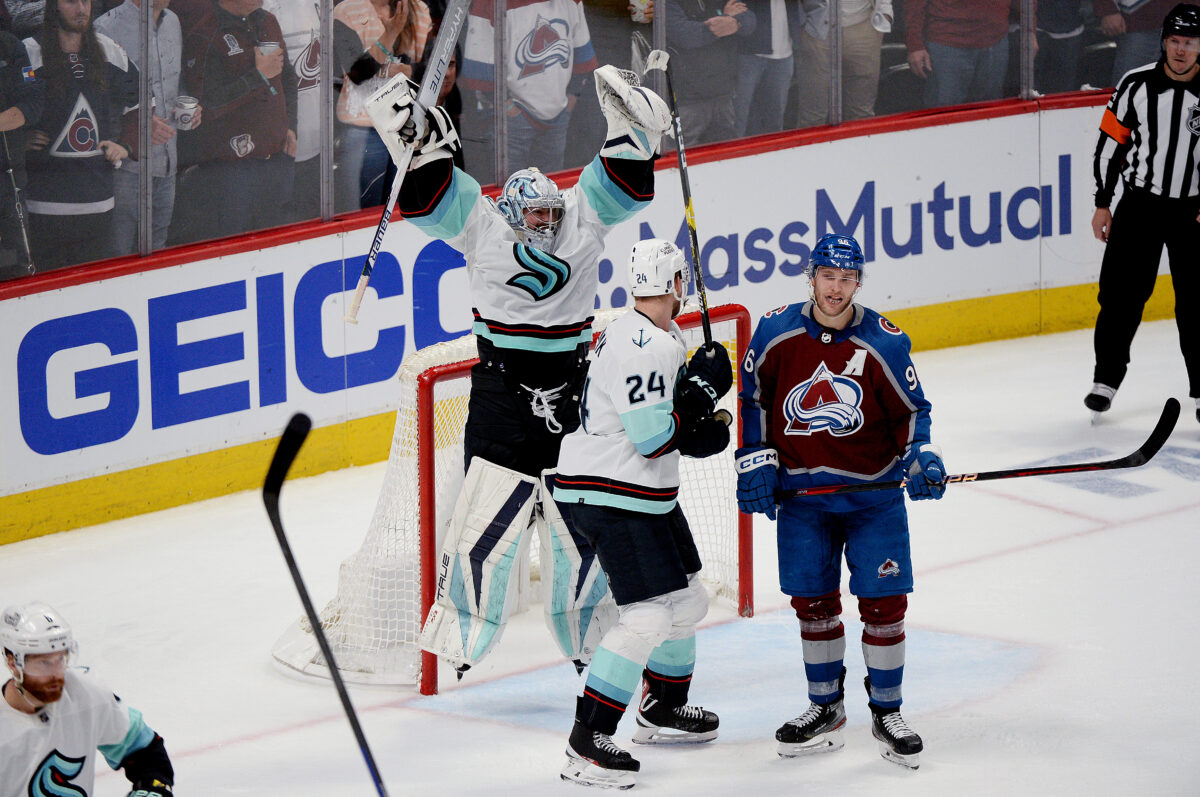
Andrei Vasilevskiy is a world-class goaltender and arguably the best in the NHL, helping lead the Tampa Bay Lightning to three consecutive Stanley Cup Final appearances and back-to-back titles in 2020 and 2021. But he struggled against the Toronto Maple Leafs and was outplayed by Ilya Samsonov, who entered the series with only seven playoff starts under his belt.
Akira Schmid, who started only 14 games this season and 24 in his career, went toe-to-toe with reigning Vezina Trophy-winner Igor Shesterkin. The New Jersey Devils started him in Game 3 with the team down 2-0 in the series, and his lights-out performance allowed the Devils to win the series in seven games, defeating the rival New York Rangers. Schmid saved 135 of the 142 shots in the series and put together a 31-save shutout in Game 7 to clinch the series.
Goal scoring was up this season as offenses were playing at a higher level. In turn, goaltenders struggled, and a lot of teams thrived despite that. Last season, 35 goaltenders who started 30 games or more had a .900 SV% or better, but this year, that number was down to 24. A lot of teams made the playoffs without elite goaltenders, and some of them have not only advanced past the first round but look like Cup contenders.
Teams are thriving without elite goaltenders and investing heavily elsewhere. Does elite goaltending still matter? In an offensive-minded league, does a contender need an elite player in net to win the Cup? How should front offices value a position that has carried a lot of weight throughout history?
There are a few things to consider, especially in the modern game. History has played a big role in shaping how goaltending should be valued, but this season might be a turning point.
History Indicates Elite Goaltending is Essential
Throughout the history of the game, elite goaltenders have been integral to Stanley Cup-winning teams, especially teams that sustained long-term success. Almost every dynasty had a superstar in net who could be relied on to save a game and take over a series.
Vasilevskiy is the most recent example, as he not only helped the Lightning win back-to-back Cups but often carried them. In the 2021 Playoffs, his .937 SV% and 1.90 GAA on 699 shots with five shutout performances helped the team win the Cup, while he captured the Conn Smythe Trophy as MVP. Along with Vasilevskiy, Martin Brodeur, Patrick Roy, and Bernie Parent all played crucial roles in helping their teams to multiple titles.
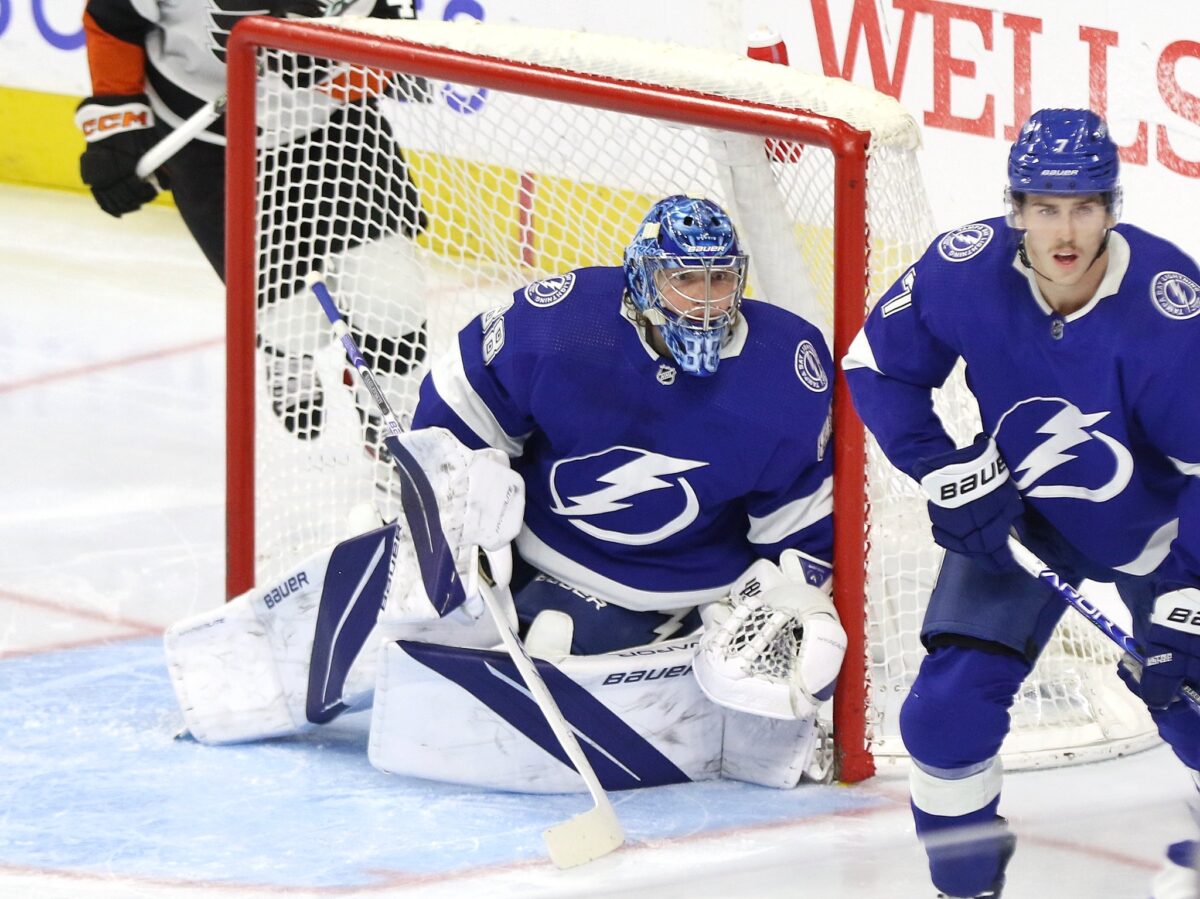
Occasionally, a goaltender will come out of nowhere and fuel a Cup run, but most champions have one of the best netminders in the league. In the playoffs, teams need someone who can shut down an opponent and close out a game or a series, and most importantly, play at a high level without a drop-off (a bad week can cost a team a series).
That said, in the 1980s, when goal scoring was high, teams would average five goals per game or more, especially Wayne Gretzky and Mark Messier’s Edmonton Oilers, who won the Stanley Cup five times in the decade. Conversely, goaltenders struggled. A SV% over .900 was a rarity and, in some years, would still lead the league. Scoring was at an all-time high, and having a goaltender who could make a few big saves was good enough. Grant Fuhr’s career SV% was .887; he never eclipsed the .900 mark with the Oilers, but he was good enough to help the team win multiple titles, making the big saves that allowed their high-flying offense to win games.
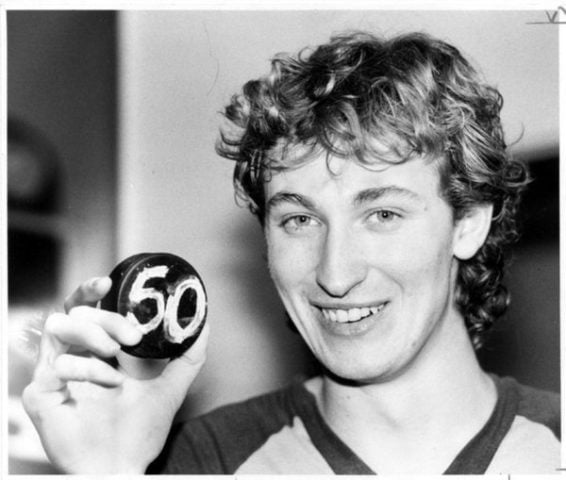
The league isn’t going to return to an era like the ’80s when offenses reigned supreme. However, as the league shifts toward offense, and teams value playmakers, goal-scoring will continue to increase. As a result, there will be a similar shift in net as the goaltending position is re-evaluated.
NHL Teams Need Stability but Not Elite Goaltending
With a focus on offense and skill, there isn’t much value in having a goaltender who can win a game. Instead, it’s about having one who doesn’t lose it. They don’t need to steal a game but avoid costly errors that can be the difference in a playoff series. In a league where every position is rapidly becoming more skilled, baseline goaltending could go a long way.
The Oilers reached the Western Conference Final in 2022 on the backs of Connor McDavid, Leon Draisaitl, and a potent offense that scored 65 goals in 16 games. Goaltending was their weakness, with Mike Smith allowing costly goals throughout the postseason. The team advanced past the first and second rounds despite his performance and not because of it.
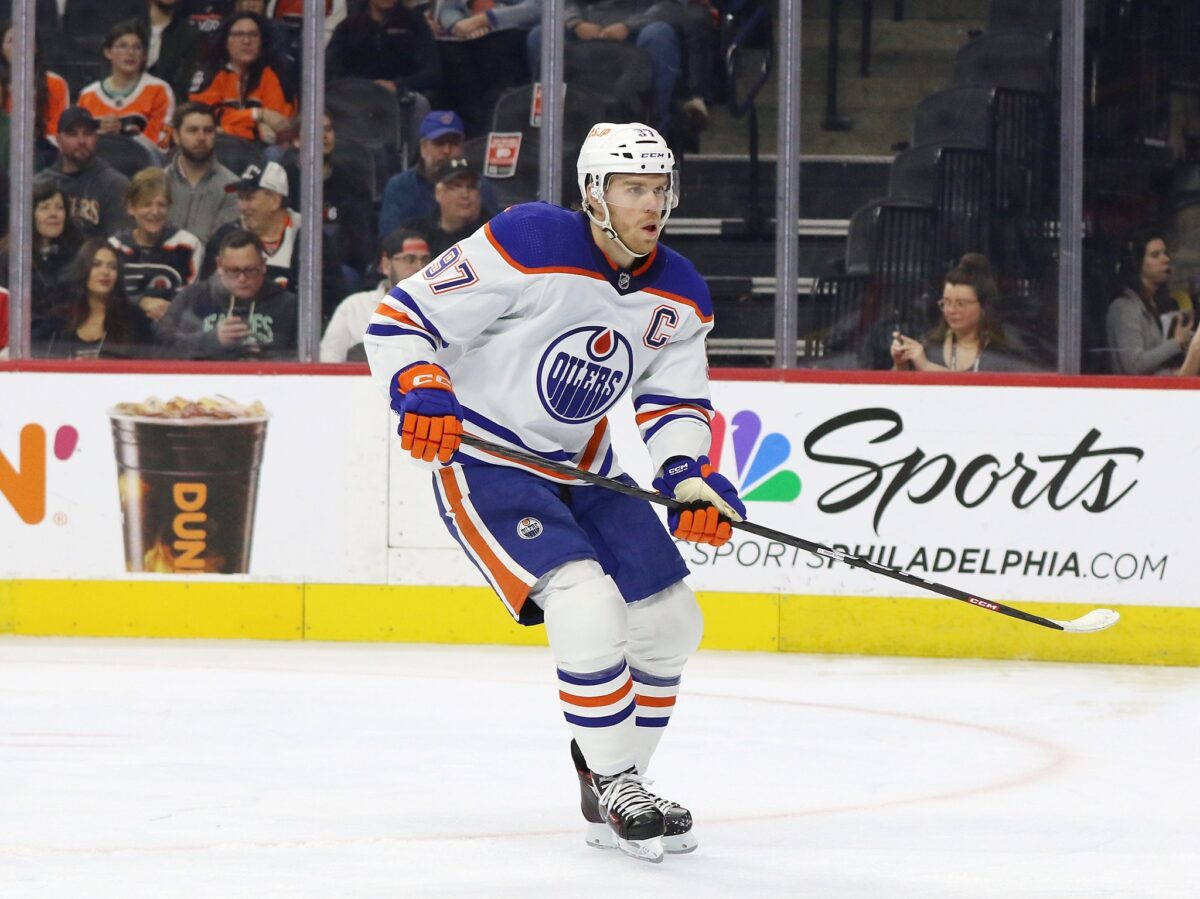
In the offseason, the Oilers addressed their goaltending issue by acquiring Jack Campbell but also gave 24-year-old Stuart Skinner a significant number of starts in 2022-23. While Campbell struggled during the regular season, he helped provide stability, starting 34 games and proving he could come off the bench if needed. In Game 4 of the first round, he did just that, relieving a struggling Skinner with the Oilers down 3-0 after the first period and saving 27 shots to allow them to win 5-4 in overtime. While the team’s goaltenders aren’t elite, they’ve raised the floor, and with a great roster, a Stanley Cup title looks like a real possibility.
The Devils had a similar idea. They had a young and talented core, led by Jack Hughes, Jesper Bratt, and Nico Hischier, but defense and goaltending were issues. In the offseason, they acquired John Marino to improve the defense and signed Vitek Vanecek to add stability in goal. Vanecek wasn’t a great goaltender, but he was a reliable starter, and with the help of a great defense, he looked elite.
This season, the Devils improved in all facets of the game. The young core led one of the league’s best offenses, while the defense was among the best in both the defensive zone and at the point. The defense notably helped out Vanecek, who was no longer tasked with saving the Devils; he just had to make the easier saves. Likewise, when Schmid replaced him to start Game 3, the team helped him thrive. In the final five games of the first round, Schmid faced only 142 shots or 28.4 shots per game. It’s unclear if they would have won the series with Vanecek, but the entire roster stepping up allowed them to ultimately take the series.
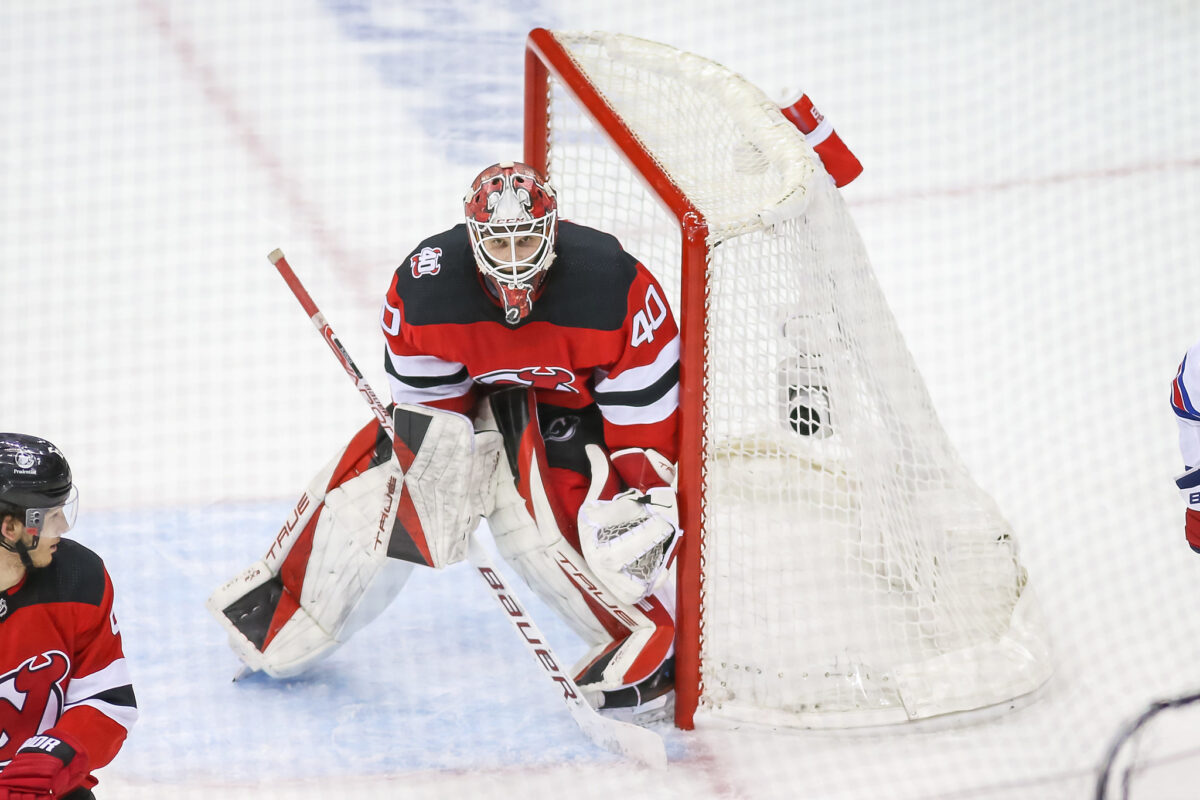
As the league continues to trend toward speed and skill, GMs will model their teams after the Oilers, Devils, and the other teams that are taking over the league. Not only will they try to add talent up front and on the back end, but will build teams that can thrive with an average goaltender.
Clutch Goaltending Can Beat Elite Goaltending
In the first round, the best goaltender didn’t necessarily have the better series. Instead, the hot hand took over the series, often outdueling an elite goalie.
The Maple Leafs vs. Lightning was high scoring, with 44 goals in six games. Samsonov didn’t have an impressive series, with a .900 SV% and a 3.14 GAA on 190 shots, and a minus-1.3 GSAA. However, when the Maple Leafs needed him to step up and make the big saves, he did just that. In Games 3 and 4, he shut out the Lightning in the third period, allowing the Maple Leafs to come back and win both games in overtime, and in Game 6, he stopped 31 of 32 shots to clinch the series.
Samsonov didn’t necessarily outplay Vasilevskiy. Both goaltenders needed to make crucial saves, and he was able to while Vasilevskiy, despite being an elite goaltender, couldn’t. Alex Hobson, who covers the team at The Hockey Writers, summed it up best saying, “If your goaltender is letting in bad goals at crucial times, it doesn’t matter if their save percentage is over .920.”
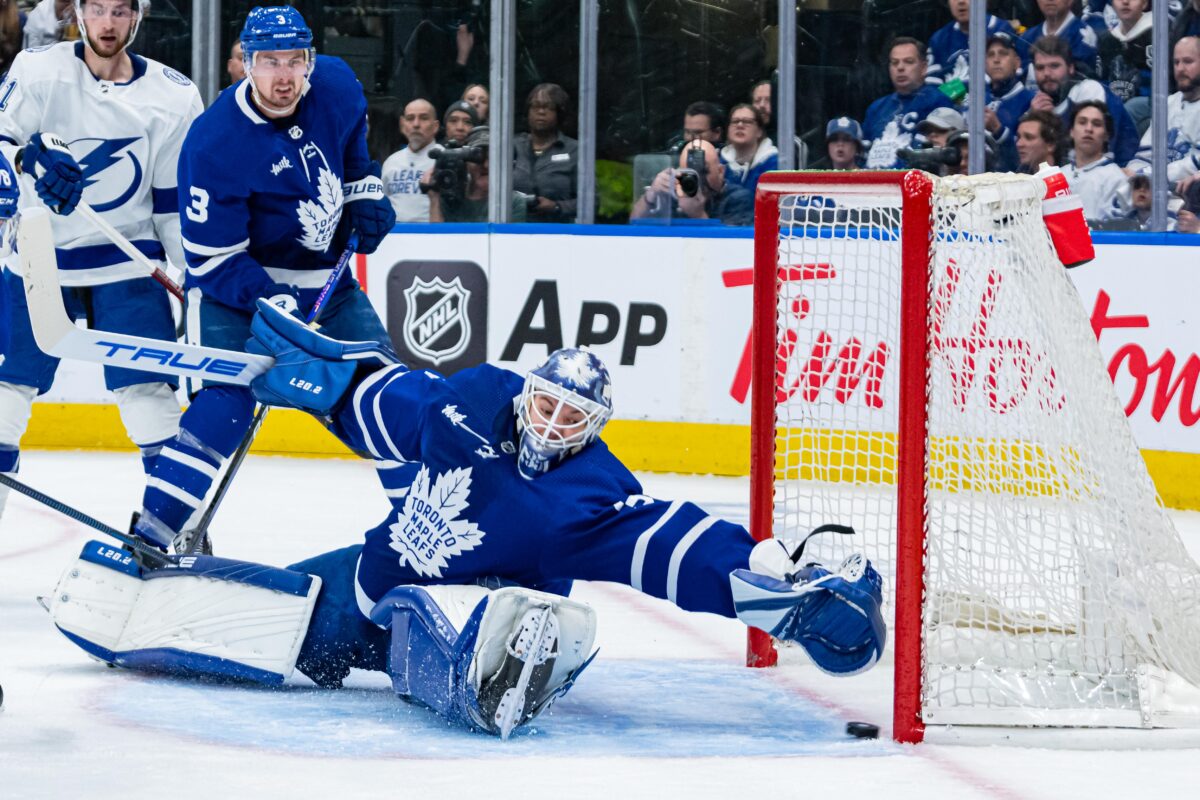
While Samsonov made big saves in each game, Grubauer had the hot hand for the entire series against the Avalanche. He started only 36 games for the Kraken during the season, but facing his former team, he stepped up and took over the series, not only making the right saves at the right time but blanking the Avalanche offense.
Similarly, Sergei Bobrovsky wasn’t the starting goaltender but backed up Alex Lyon in the first three games of their series. When the Panthers turned to him for Game 4, he struggled, allowing five goals on 30 shots, but in the next three games, he flipped a switch and played at a high level. He saved 106 of the 117 shots to allow the Panthers to complete the series comeback and pull off one of the biggest upsets in NHL history. Bobrovsky didn’t have a great season and wasn’t better than Ullmark, who put together a remarkable season, but when it mattered, he outplayed his opponent.
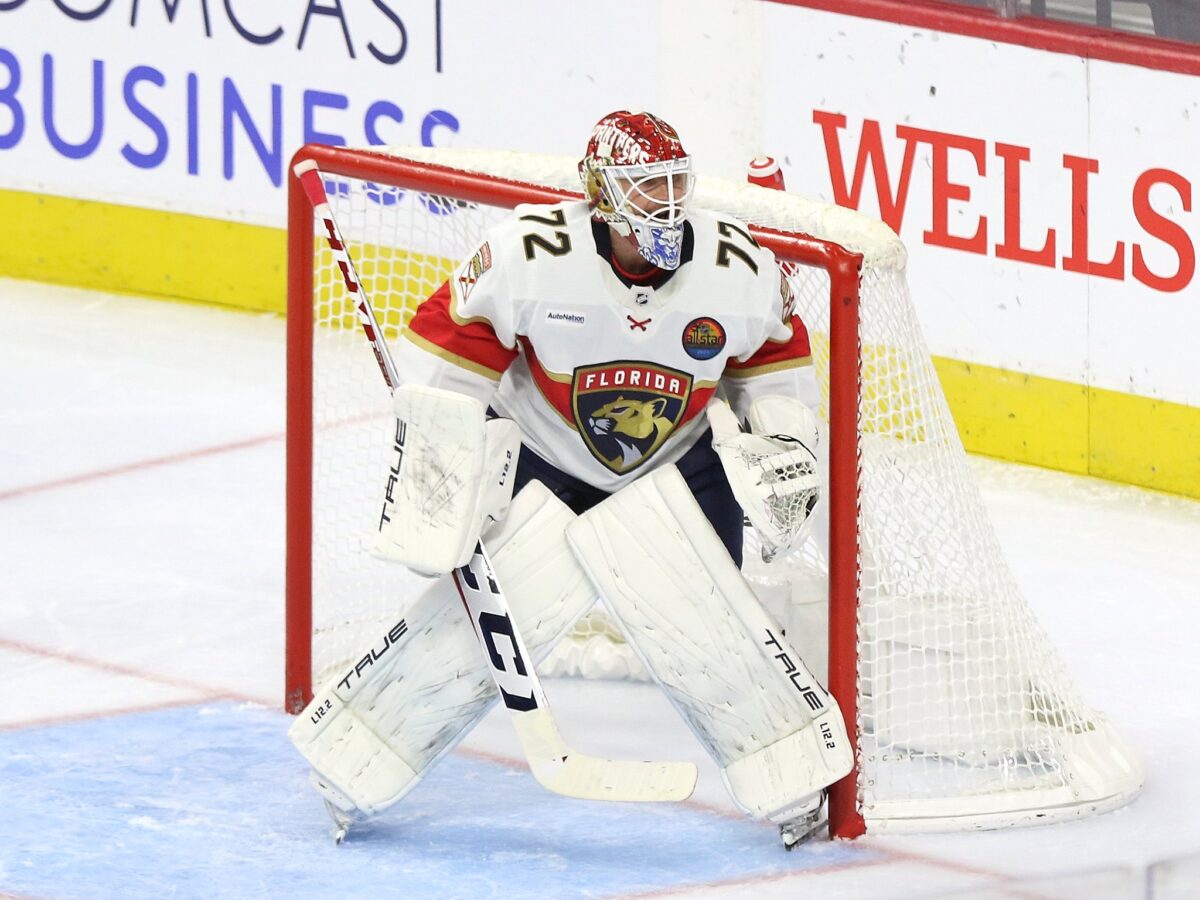
Bobrovsky took over the series to upset this season’s Presidents’ Trophy winners and the Presidents’ Trophy winner in 2019, outdueling Vasilevskiy to help the Columbus Blue Jackets sweep the Lightning. The question is, can a goaltender who isn’t great during the season remain hot for an entire playoff run? It’s happened before but not often. Jordan Binnington had that type of run in 2019 to help the St. Louis Blues win their first Cup in franchise history, while Cam Ward fueled the Hurricanes’ Stanley Cup run in 2006. Likewise, when the Los Angeles Kings won the Stanley Cup in 2012 and 2014, they did so with Jonathan Quick putting together the best performances of his career.
It’s hard for a good goaltender to play at a very high level for a long time, specifically long enough to allow a team to go on a deep playoff run. Likewise, there’s a lot of unpredictability when it comes to finding a clutch goaltender, one who plays better under the spotlight. However, as the league changes, front offices might prefer that risk over betting on an elite goaltender to carry them.
NHL Front Offices View Goaltending With The Cap in Mind
The Devils spent $7 million on their goaltending unit, while the Hurricanes spent $8 million this season. In comparison, the Panthers spend $10 million per season to have Bobrovsky on their roster, while the Lightning are spending $9.5 million for Vasilevskiy. The Devils and Hurricanes are spending the minimum but are using the extra salary cap space to improve their roster overall.
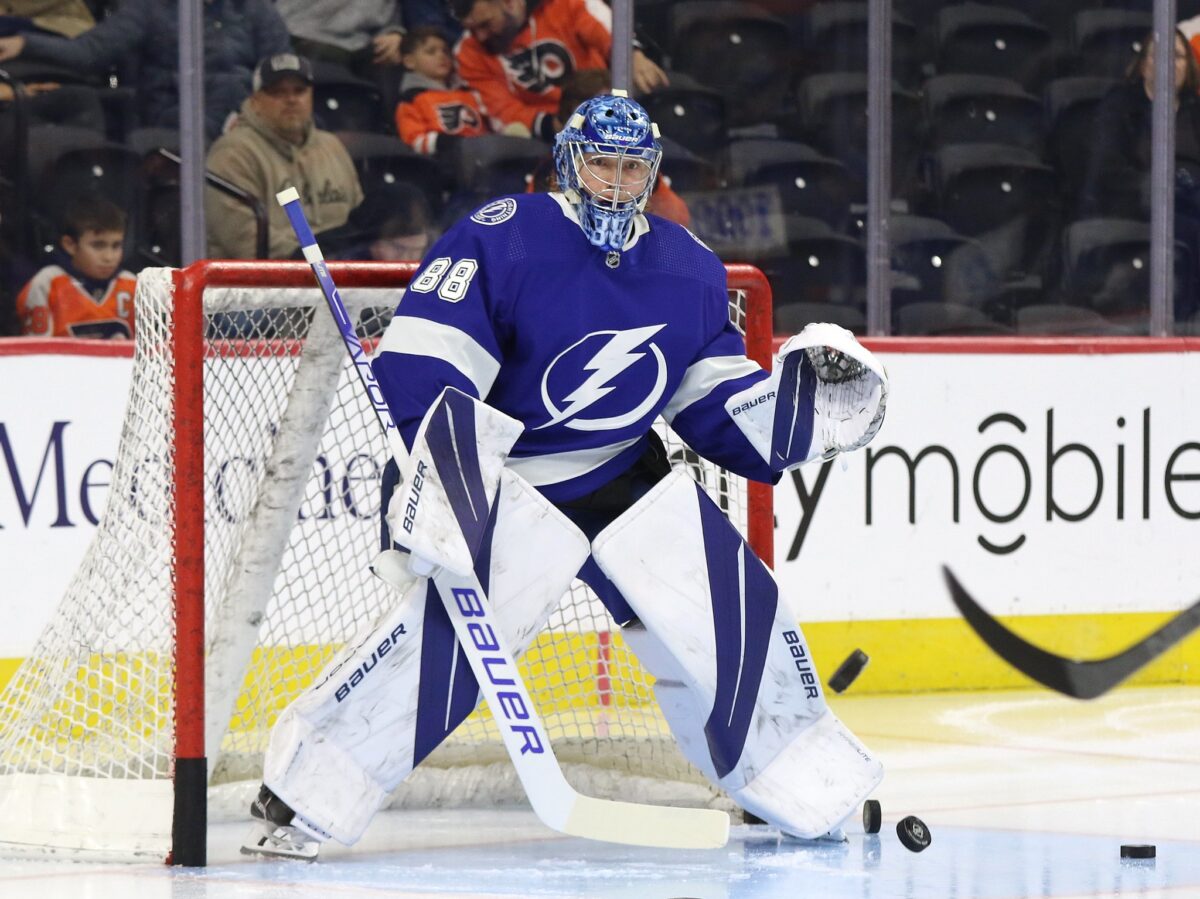
GMs who invest in elite forwards and defensemen but not goaltending end up with rosters built to thrive regardless of who is in net. Goaltenders have a lot of randomness to their games and can enter slumps at any point, but skaters don’t endure the same highs and lows.
Granted, most NHL dynasties won the Cup with elite goaltenders. However, that was before the salary cap era. The Montreal Canadiens of the 1970s and the Oilers of the 1980s didn’t have to decide between paying their goaltender or their skaters, and it allowed them to keep the same roster for multiple seasons. Teams don’t have that luxury today, and as the price of elite skaters continues to rise, goaltending seems like the position to cut costs. Why would a front office pay one elite goaltender when they can split starts with two at a cheaper price?
The Avalanche haven’t invested heavily in goaltending in recent seasons. They allowed Grubauer to leave as a free agent in 2021 and signed Darcy Kuemper on a team-friendly deal. Instead, they devoted their cap space to the rest of the roster, specifically their star skaters, including Nathan MacKinnon, Mikko Rantanen, and Cale Makar, allowing them to win the Stanley Cup in 2022. That offseason, they allowed Kuemper to leave in free agency and acquired Georgiev from the Rangers.
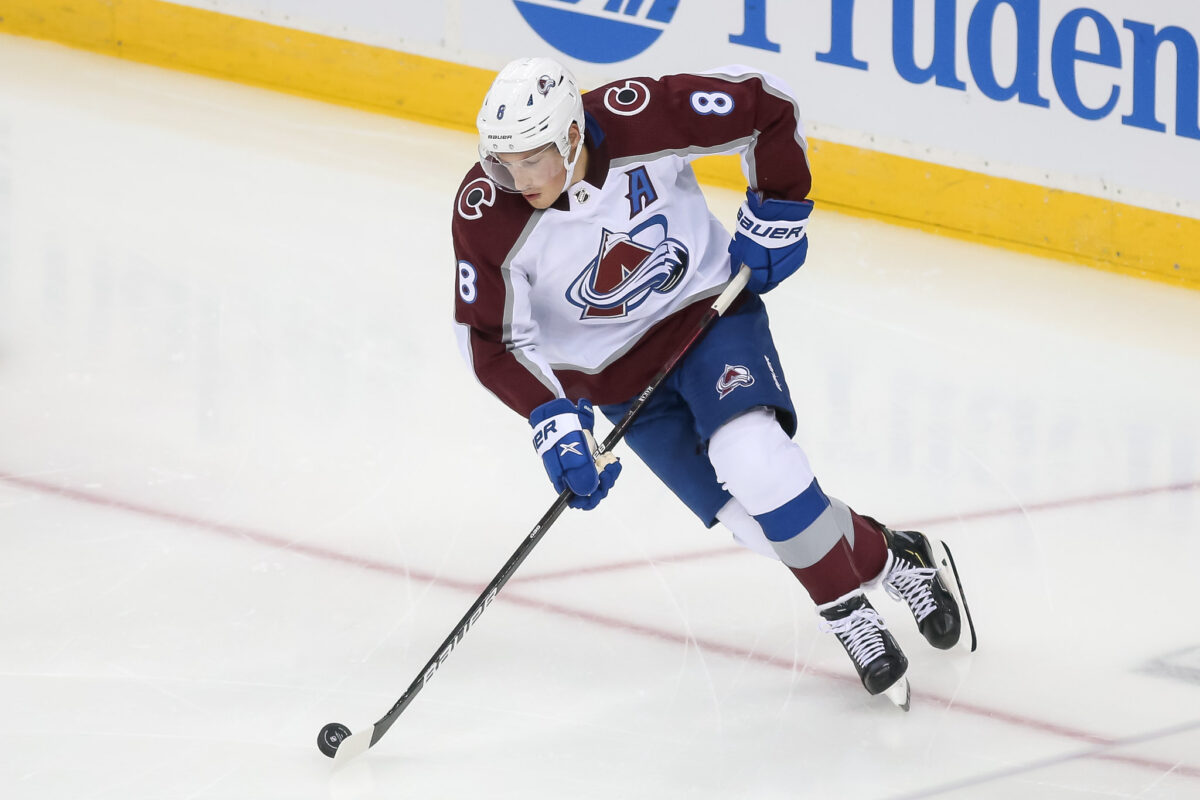
The Avalanche might be starting a trend. They built a star-studded roster that didn’t need an elite goaltender to succeed. They valued defensemen who could limit opponents from finding shots on net while also generating offense. Likewise, they built an offense that could outscore their opponent and win high-scoring games. This season, a lot of teams tried to emulate that model, and it might be how teams are built in the coming years.
Goaltending in the 2023 Stanley Cup Playoffs
A good goaltender raises a team’s floor, but great skaters, particularly goal scorers, raise the team’s ceiling. If a team has an elite goalie, they can make the playoffs, but the skaters will lead them to the Cup. The Islanders saw firsthand how far a great goaltender could take them. The roster struggled, but Sorokin had a Vezina Trophy-caliber season and willed the team to the playoffs. However, he could only do so much as the Islanders lost in the First Round to the Hurricanes, a complete team that has elite skaters to lead them on a Cup run.
The NHL has placed its emphasis on offense, as players are being developed and coming up through the junior leagues with more skill than ever. Along with young two-way players, there are better puck handlers, skaters, and playmakers, regardless of their position. While defensemen, especially two-way defensemen, are playing a bigger role than ever before, even as goals are on the rise. The cost is in the net. Paying a goaltender, especially an elite one, is no longer necessary. Today, it’s easier to have a team carry one player than one player carrying the team. The Avalanche started this trend, but a lot of this season’s playoff teams have followed that blueprint.
There’s also been a shift in starts. In the 1990s and 2000s, it was common to see an elite goaltender start 60 or even 70 games a season. Now, even the best goaltenders will only start 50 or 60 games while their backup covers the rest. On a recent episode of 32 Thoughts: The Podcast, Jeff Marek and Elliotte Freidman discussed how the Bruins split starts between Swayman and Ullmark all season but struggled to adapt in the playoffs. Ullmark started every game, but when they struggled, the Bruins frantically turned to Swayman for a winner-take-all game.

Likewise, the Minnesota Wild, who split starts between Filip Gustavsson and Marc-Andre Fleury during the season, tried the same in the playoffs. After Fleury struggled in Game 2, a 7-3 loss to the Dallas Stars, they abandoned the strategy altogether and relied heavily on Gustavsson, who was on the losing end of the final three games of the series. It’s unlikely teams will split starts within a series, but in the future, teams can use the tandem to their advantage, starting the goaltender who has the momentum. The Washington Capitals did that in 2018, starting Grubauer for the first two games in the First Round, but after Braden Holtby stepped up in Game 3, they kept him in the net. Holtby never looked back and carried the Capitals to their first Cup in franchise history.
There’s no way to predict what the state of goaltending will look like in a few years. It’s possible that the scoring surge is a blimp, and goaltending and defense will once again dominate the league as they did in the previous decade. However, the way the league is trending, front offices might take a second look at their goaltending units.